This article was updated on March 28th, 2020.
I’d Rather Be Backpacking
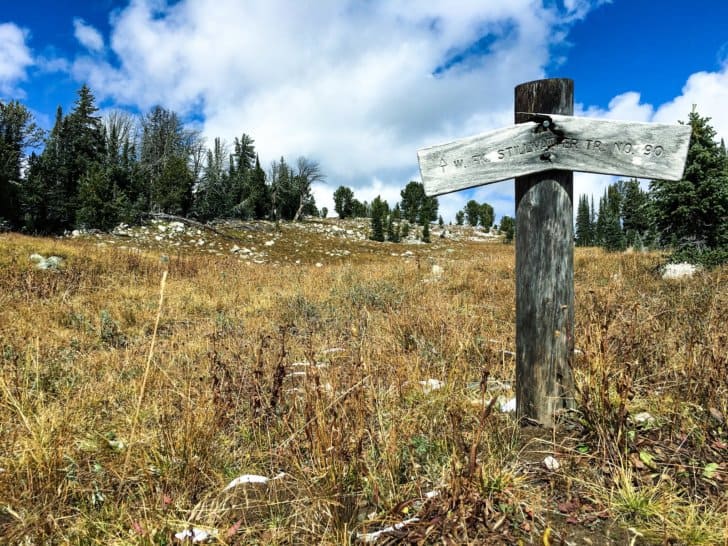
Like you – I should be backpacking right now.
2019 was tough for me, one of the toughest years of my life, and I’ve been planning a 2020 thru-hike of something, anything, for a while now. As I’ve said elsewhere, long hikes are how I do the weeding of my internal landscape. After three years of trying, my wife and I finally reached the medical and emotional end of our attempts to get pregnant. The act of “giving up” was freeing in one sense, but it also sent me spiraling into a depression that was proving hard to escape. I needed some time in the woods – a long time in the woods – to get my head on straight again.
Initially, I was going to tackle the Pacific Crest Trail. As the vagaries of life mounted up and it became apparent I wouldn’t be able to take four-to-six months off from my career and relationships; I shortened my goal to the Arizona Trail. At some point, even that (relatively) shorter hike became impossible to squeeze into my schedule, and I downsized my goal once again to the Benton McKaye Trail – 300 miles up and down over the ridges and hollows of the western Smoky Mountains.
On March 11th, I was tossing my final bits of food onto the scale and updating my spreadsheet with odds and ends. My pack, a new offering from Rogue Panda I was going to test for BPL, was packed.
On March 12th, I was canceling my flights and the reservation at the hostel I’d made just ten hours earlier. Over the weekend of the 14th and 15th, the fabric of American social life changed suddenly and completely for large portions of the country. As well all know, the situation accelerated quickly – like an avocado going from rock hard to rotten in the course of a few hours. Now as I make the final updates to this article (March 28th, 2020) Covid-19 is the one and only thing in the news and in private conversations.
It might seem trite to be talking about backpacking, and examining the implications of the pandemic on this year’s crops of thru-hikers, in light of the severe financial and social impacts of Covid-19. But we backpack because it meets some deep-seated need in all of us, and in times of stress the urge to sling on a pack and escape from the world can become even more pressing. And it just so happens that Covid-19 ramped up just as this year’s batch of northbound thru-hikers are getting ready to hit the trail (some of them already have).
So we need to take a hard look at what it means to be a long-distance backpacker in 2020 – what types of trips should be off the table, what types of trips are still okay, and how to keep yourself sane if you can’t make a backpacking trip work this year.

Why Canceling Your Thru-hike is Hard.
“…we have all been asked to make changes, make sacrifices, and/or take precautions to minimize [Covid-19’s] spread.
We at the Appalachian Trail Conservancy (ATC) are now asking you to do the same: please postpone your section or thru-hike. Instead, consider alternate ways of connecting to the Trail and to the outdoors.”
– Sandra Marra, President & CEO, Appalachian Trail Conservancy
When I wrote the first draft of this article (March 18th, 2020) there was still some discussion of whether or not it was okay to continue or begin your thru-hike this year. In the weeks since, it has become more apparent than it already was that the answer is clearly “No, it’s not okay.” But just in case you are one of the holdouts, consider the following.
To put it simply, planning a thru-hike is hard. Really, really hard. It takes careful negotiation with your place of work – or you have to quit your job and hope you can find one again when you return. Many people suspend their car insurance and make other complex life changes in advance of a hike. It takes savings and forethought, and a certain amount of logistical and financial precision. It often takes sacrifices on the part of your loved ones.
So with all that work achieved and with your hike on the horizon, it can be easy to convince yourself that thru-hiking won’t have a negative social consequence at this point. But you’d be wrong.
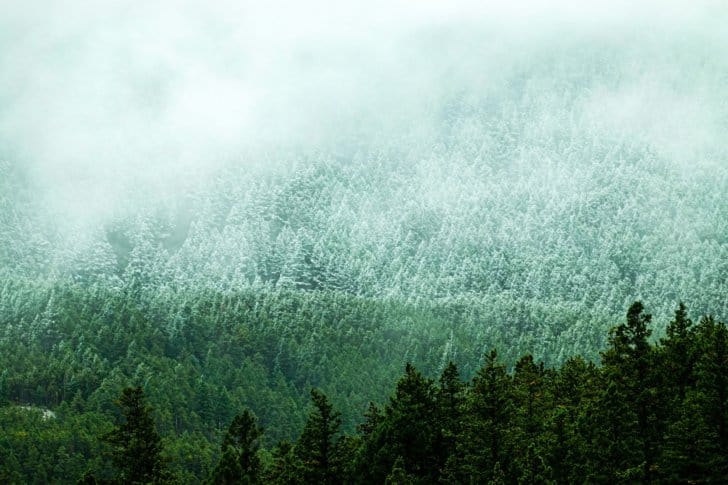
This way of thinking is called “loss aversion bias,” and it’s the reason new employees often have an easier time spotting systems or protocols that need to change in the workplace, and why people tend to stay in bad relationships. If you’ve worked hard for something, or sunk time into something, you don’t want to give it up – even if it is inefficient, ineffective, or ethically questionable. We’re just hardwired to avoid loss.
Jeff Garmire Gives Up on a Dream
Consider Jeff Garmire. Jeff is an elite long-distance athlete. He’s set fastest known times (FKTs) on the Arizona Trail and the Long Trail. For the 2020 hiking season, he was aiming for FKTs on the PCT and the AT. He’d also been invited to run the Barkley Marathons. Only forty people a year are accepted to the Barkley Marathons, so getting a chance to run them is potentially a once-in-a-lifetime opportunity.
A few weeks ago, Jeff made an excellent blog post on his struggle to cancel his 2020 plans. The whole thing is worth a read, but here’s an excerpt:
“I had my plane ticket and was prepared to travel through three airports, crossing the country to try to complete a race with a 1% finish rate. The more news, numbers, and widespread impact of Covid-19 [became apparent] the more I began to wonder about my social responsibility versus my personal goals.
…The concept of attending and running the race resulted in sleepless nights. But, I couldn’t possibly withdraw and risk never getting the chance to run in the only race I had wanted to attempt for years. Every night I sat awake wondering what the future would hold but paralyzed by indecision…
…Finally, a company I have been working with who had taken care of my travel arrangements asked me if I would attend if the race was still held. I thought about the question for hours and eventually replied that I would not. It took the external question to set me straight. I had irrationally held on to the belief that I could responsibly travel across the country. My travel plans were canceled.”
-Jeff Garmire, Social Responsibility and Personal Goals: Barkley Marathons, Coronavirus, and Valuing the Dreams of Others
What I find fascinating about this is that Jeff knew from the start what the most socially responsible course of action would be: cancel his plans. But still, he vacillated, trying to talk himself into something he knew would be wrong. I did the same thing in the days leading up to my change of plans – and I didn’t put nearly the time and effort into training for a 300-mile hike as Jeff did in prepping for the hardest ultra-marathon in the country.
The Depression Trap

Of course, it isn’t just logistics and finances and loss-aversion bias that makes resetting your 2020 so difficult. When we interviewed Jeff for our podcast in 2019, Ryan Jordan (BPL owner, editor-in-chief), Jeff, and I realized we had something in common – we used backpacking as a way to treat the depression and anxiety that we all struggled with. I don’t know how many long-distance hikers carry around depression as well as a backpack – but I suspect it’s a lot. (I’d love to see some kind of study on it one day).
And so in times of stress and uncertainty, it’s doubly hard to give up on something that you know will be a salve on your raw psyche.
But here’s why you should.
Why You Should Cancel Your Thru-hike
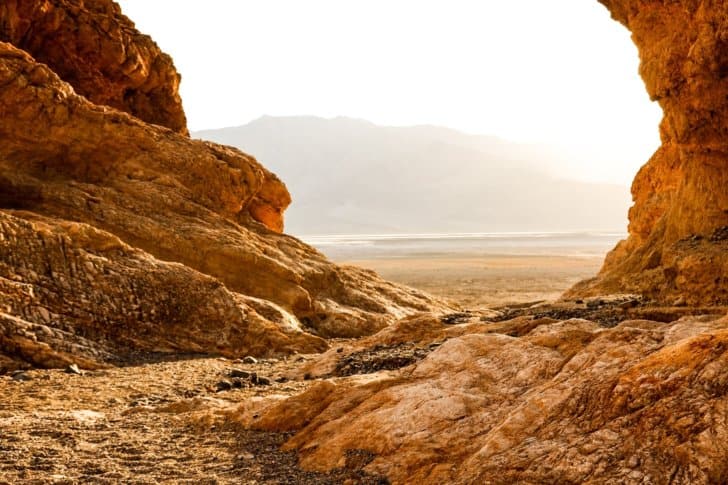
The Ethical Considerations of Social Distancing
It’s incredible how quickly the phrases “social distancing” and “flattening the curve” entered our lexicon. And at first glance, both of these concepts are compatible with long-distance backpacking. But dig in a little more, and it becomes evident that thru-hiking (at least in the way it is commonly practiced on the more popular trails) is untenable in the age of Covid-19.
For one thing, thru-hikers often share physical space, food, latrine areas, and water sources – particularly in the more crowded-southern portions of popular trails. When you combine proximity with the poor hygiene that is all-but-inevitable in such situations – well, it seems obvious that Covid-19 will spread on the trails. Given the current lack of test availability and the lag-time associated with this virus, there’s almost certainly at least one person on the AT who has it – and, as we know, one is all it takes.
Covid-19 spreading among a relatively young, relatively fit group of thru-hikers is one problem – but those hikers spreading the virus to isolated, rural, trail-side communities is another problem altogether. These towns generally have an older demographic, and certainly lack the resources to deal effectively with a cluster should one appear.
When I talked to Jeff Garmire about all this a few days ago, he pointed out another factor I hadn’t even considered – trail angels.
“A lot of…trail angels are older. They are part of the age group that is more likely to experience complications from this pandemic…and potentially taking resources away from them and elevating their risk felt like an insult to the people who have selflessly aided hikers and trail users for years,” Jeff said when I interviewed him for this article.
The Logistical Complications
If the ethical conundrum isn’t enough to sway you, consider this – Covid-19 is throwing monkey wrenches into the already complicated logistics of a thru-hike. The closure of small-town grocery stores, gas stations, and other resupply points was one of the first warning signs many potential thru-hikers got that 2020 might be off the table.
“It happened really fast…within three days I went from considering a different resupply strategy to deciding not to go entirely,” said Maggie Slepian, the Managing Editor of The Trek, when I reached out to her for comment about her aborted PCT thru-hike:
“…once I started getting wind of closures along the trail in smaller towns and the potential for a seriously limited resupply, I added three locations for mail drops in the desert alone.” Not long after, Maggie pulled the plug because, as she says, “…it started to seem selfish and indulgent. Once that idea got into my head, I couldn’t shake it, and the next day I got onto a call with my boss…and by the end of the call, I had canceled the hike.”
On top of resupply issues, there’s the problem of transport and other infrastructure conundrums. Major airlines have already cut their available capacity by huge margins. Will buses, shuttles, taxis, and ride-share programs do the same? Hard to say, but one has to think it’s at least on the table. And let’s not forget that it will be harder to hitch a lift to and from trail heads. Trail angels will likely be less willing to share their personal spaces.
At this writing, states are imposing more and more draconian isolation measures as social distancing gives way to shelter-in-place and mandated quarantines. Can you imagine popping into town after a few days in the backcountry only to discover that you are violating a quarantine that went into effect only hours before?
Some Other Considerations
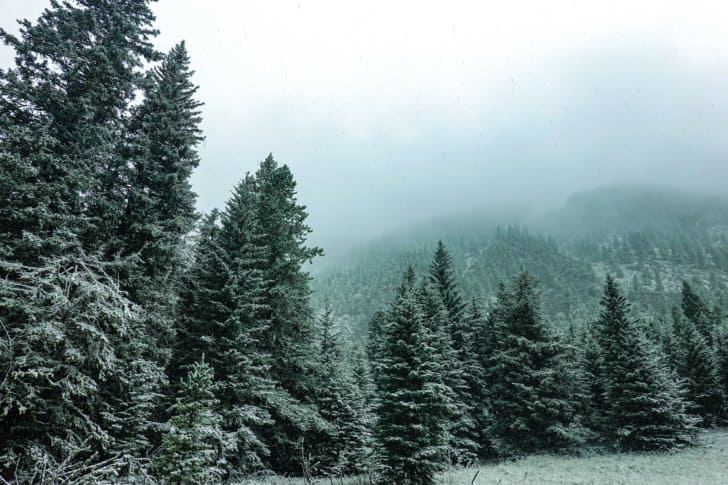
Some final thoughts.
Maybe now isn’t the best time to spend weeks and months away from your friends and family. The truth of the matter is that thru-hiking is an inherently self-centered endeavor – it’s often as difficult for our loved ones as it is for those of us carrying packs (albeit for different reasons). The trail will be there next year – I’d argue it’s probably more important to devote your time and energy to a sense of community at this moment.
There are also some safety issues to consider. Rescue teams and first responders may be busy with other things should you need some help for non-Covid-19-related reasons – or that you might be taking away resources from someone who needs them more than you.
Finally, there’s a conservation issue at play. In their statements to the public, major trail associations are already indicating that ridge runners, trail crews, and other maintenance and support systems will be limited-to-non-existent this year. The upshot is any given hiker’s impact on the trail and surrounding ecosystems will be much more significant than in years past.
All in all, there are many good reasons to cancel or abort your thru-hike – and not many great reasons to continue forward with it. The reasons to cancel are about other people. The reasons to continue forward regardless of Covid-19 are about you.
So Your Thru-Hike is Canceled – Now What?
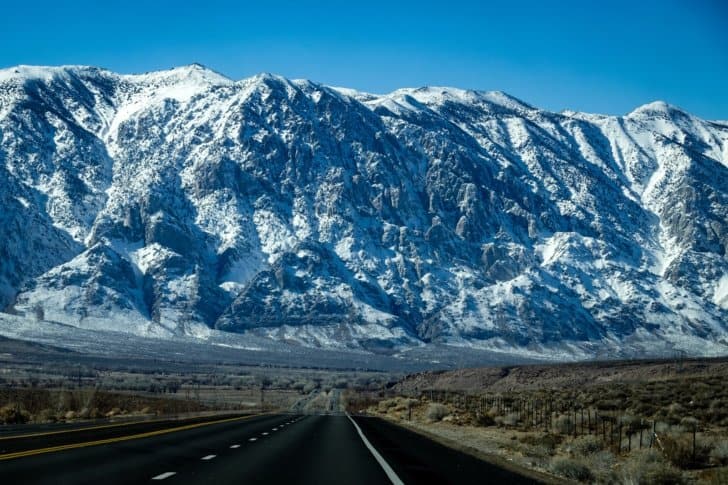
Now that you’ve (hopefully) changed your plans, what can you do to get a taste of the long-distance backpacking that you love?
- Your best bet is to discover, or re-discover your local outdoor opportunities, and to keep your trips very short – and thus limit the need to travel and resupply. One troubling idea that pops up a lot in outdoor circles is that western mountains and deserts are better than eastern mountains, or that the midwestern and south-eastern states have nothing to offer to backpackers or other recreational outdoor enthusiasts. This simply isn’t true. There’s a lot to explore out there, no matter what corner of the country you call home. We’ve got some ideas on how to backpack responsibly during this time (hint: it involves an extremely specific set of circumstances) – scroll down for more.
- You can also change your trip-type entirely. Backyard camping is a fantastic way to learn or hone new skills in a low-stakes environment. Now’s the time to learn how to pitch a tarp, or paint with a small watercolor kit, or take up the harmonica, or learn a new knot. When your time to thru-hike circles back around, maybe you can use your new skills to drop some ounces out of your pack – or make music and art in the backcountry.
- On the days you are stuck inside, consider doing some additional daydreaming and trip planning. I know – you’ve been daydreaming and trip planning about thru-hiking for years. But now you’ve got a little extra time. So maybe you can think of something even cooler to do – perhaps a trip that involves multiple modes of human-powered travel? Something in a different country?
- Train! Be careful not to fall into the trap of eating or drinking more than usual while stressed out and stuck inside. If anything, you want to go the other way. I’m trying to look at my postponed hike as an opportunity to improve my fitness for the next adventure. That means more squats, more trail runs, more yoga/mobility exercises, and increased awareness of caloric intake and quality of nutrition.
- Above all, you should take care of yourself. We seek adventure and trail-life partially to escape the stress and trials of our modern world. It’s important to realize that having to cancel your thru-hike is a loss. And as much as other people have their own pain and losses to deal with, it’s okay to mourn the loss of your adventure. One thing that can help is to reframe your circumstances a bit. Jeff Garmire, freed from the pressures of training for FKTs, is leaving his sports watch at home and running for the joy of it. Maggie Slepian is trying to get her life back on track after nearly suspending it for her hike, but suddenly has six-months of saved income she can put towards other things in her life. Me? Well, I get some more time with my family, and I’m around to help my wife as she tries to figure out how to be a teacher from behind a computer screen.
How to Responsibly Backpack in the Age of Covid-19

I think it’s possible to backpack responsibly during this time – with strict adherence to a few guiding principles, and as long as you use these principles to err on the side of caution.
Comply with Your Local (Current) Guidelines
As I write this, the state and county governments where I’m located (Placer County, CA) have both instituted strict “stay-at-home” measures to help flatten the curve. Crucially, both of these mandates make exceptions for outdoor activity, so long as that activity takes place in a socially isolated manner. Many states seems to be following suite. Of course, this could change in an instant – the situation is moving quickly. If your local or state government institutes official quarantine measures that include not leaving the house for anything but emergencies and groceries, you have a social duty to abide by those measures.
But for now, the thought seems to be that getting outside and exercising while maintaining social distance is more beneficial to our society than forcing people to stay inside.
Stay Local
Your trip has to take place within a geographical area that you can reach easily, by car, with minimal-to-no social interaction. At this point we are really talking thirty minutes and under by car.
You should avoid point-to-point trips, as they require shuttling or some other type of social interaction; loop or out-and-back trips are best. Day hikes from a base-camp near your car are even better – that way, you can get out easily if you need to. Additionally, you should respect the wishes of small towns that serve as gateways to popular backpacking areas. Many of these towns (such as the close-to-me town of Truckee, CA) have issued appeals to visitors not to come into the area so as not to overwhelm their limited infrastructure. So if you aren’t already a local in one of these gateway communities – stay away.
Stay Short
The Covid-19 situation is changing too rapidly to justify a trip longer than two or three days. Unless you are an absolute hermit, chances are someone will need your love, time, and attention in the weeks and months to come. I understand and support the need to feed your soul by being in the woods – but that has to be balanced by the needs of others.
Keep Your Distance
If you can find a trip that meets the above three guidelines – great! If you get out there and the trailhead is swamped with cars or the backcountry campsites are full – pull the plug on your trip as quickly as possible. Being in the woods isn’t social distancing if there’s a bunch of society out there with you.
Know Your Limits
Don’t travel in unfamiliar areas; don’t push yourself beyond your comfort zone and skillset, and don’t take risks. In an attempt to get away from increasingly crowded trails and public land gateways, you might have the temptation to explore remote areas that increase your risk factors. You might also have the urge to use new or unfamiliar gear during this time of boredom and cabin-fever. Don’t do either of these things. As I said above, now is not the time to risk pulling resources away from those who didn’t intentionally put themselves in harm’s way. You should only get into serious remote areas if you absolutely have the skill-set travel these areas with maximum possible safety – and chances are you are overestimating yourself a little.
Make Contingency Plans
Stay in touch with your household using a satellite phone or GPS communicator (one that you know is effective). Have a plan for: what to do if a member of your household gets sick, what you’ll do if you become symptomatic while on your trip, and how you’ll get out of the backcountry without exposing anyone else to your illness. If you can’t come up with a satisfying answer to any of those questions – or you don’t possess a reliable way to stay in touch – don’t go.
Don’t Go Solo
A solo trip, even in an area you know well, could still be hazardous if you started showing symptoms (particularly the “difficulty breathing” symptom). While you don’t want to travel with a huge party, one solution is to backpack with a spouse or partner (someone with whom you are already sharing personal space). Another option is to travel with a tiny group – but we would recommend this only after the Covid-19 pandemic has reached it’s peak and infection rates are starting to decline.
Will We Return to Normal?
I asked Backpacking Light publisher and founder Ryan Jordan about backpacking with multi-household groups. As a professional guide and director of our Wilderness Adventures program, Ryan suggests that behaviors will change until a Covid-19 vaccine is widely available and/or a substantial fraction of our population has otherwise been exposed enough to develop antibody-based immunity.
Ryan offers these guidelines for backpacking as a group (many of which are also applicable to solo trips or trips with just your household group members) “after the peak”, and I thought I’d share them here.
The main goals of these guidelines are:
- Treat each household like an independent entity and respect the space of other households in your group.
- Minimize the chance that you’ll transmit an infection to the community you are visiting.
- Minimize the chance that you’ll expose yourself to the infection en route between your home and the trail.
Here are the guidelines:
- Travel in your own personal automobile to your destination instead of renting a car, flying, or taking public transit.
- Persons from different households should not share equipment, food, supplies, etc. Don’t handle equipment from other household groups.
- Don’t share pre-trip accommodations with persons from different households.
- Before the trip, prepare, cook, and eat your meals as part of household groups only, in your chosen accommodations (e.g., hotel if it’s available), or outside, to minimize your exposure to community restaurants, grocery stores, etc. Consider bringing your pre-trip meals with you, since restaurant services in trail communities may be limited. Do your best to limit the risk of transmitting an infection to the community you are visiting.
- All household groups should bring and use their own communications devices (e.g., satellite phones or messaging devices) to stay in touch with their family or other household members back home.
- Members of household groups should maintain social distancing of at least 6 feet from members of other household groups at all times. When cooking, household groups should remain upwind of other household groups to minimize respiratory droplet drift.
- Household groups should camp well away from each other, since activity is often concentrated around shelters.
- No household group should participate in the group trip if any member of the household group has the following health symptoms: shortness of breath, fever, runny nose, cough, sneezing, or eye drainage. All of these factors increase the risk of transmission. Even if you’re an asymptomatic carrier of the infection, let’s say you have environmental allergies. All that sneezing is going is going to let out a whole lot of respiratory droplets contaminated with the virus that could infect others near you.
- Don’t use backcountry facilities, including latrines and cabins.
- Household groups should not share latrine spaces – create and use your own.
In Conclusion
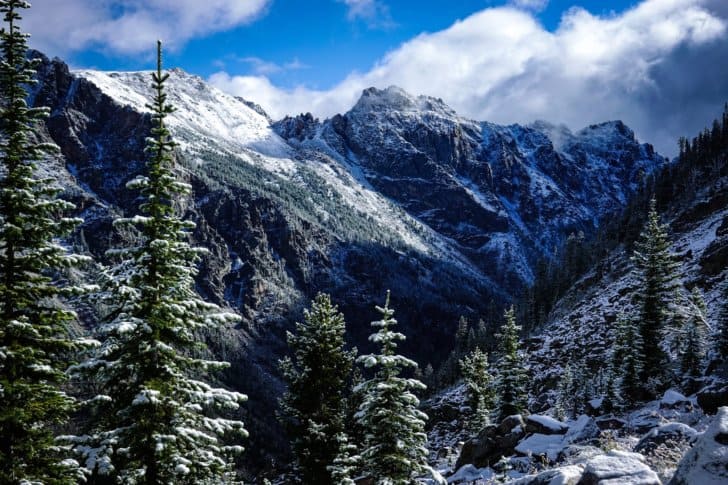
Ultimately, what I’m advocating is caution, unselfish behavior, and prudence – balanced with the realization that “isolation” doesn’t necessarily mean “indoors.” A few days of backpacking will probably replenish and re-balance you in a way that’s particularly important during this time. If you can make that happen in a way that doesn’t endanger others, then go for it!
But if you can’t, then don’t. Please, err on the side of caution. As the collective internet keeps pointing out – we are all in this together. Ultimately we cannot put a leisure activity above the safety and health of our fellow human beings. So if your prospective backpacking trip doesn’t hit the above guidelines precisely, it’s probably best to just stay home and do squats until you can’t feel your face anymore.
You’ll thank me for it when you get back out there and your pack feels three pounds lighter.




Home › Forums › Backpacking and Long-Distance Hiking in the Age of Covid-19